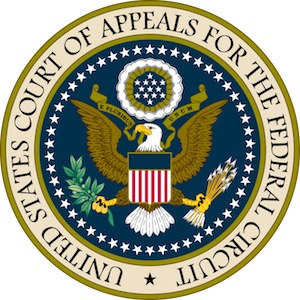
Cisco Sys. v. Cirrex Sys., LLC, (Fed. Cir. May 10, 2017) (Before Prost, C.J., Wallach, and Chen, J.) (Opinion for the court, Chen, J.)
Cisco challenged Cirrex’s patent via inter partes reexamination, asserting a lack of written description. The Board affirmed the Examiner’s findings, that the patent, as amended, contained both patentable and unpatentable claims. On appeal, the Federal Circuit affirmed in part and reversed in part, holding that all of the claims are unpatentable for lack of written description.
The Cirrex patent is directed to fiber optic communication signals and describes an assembly used to separate individual wavelengths, splitting an optical beam into multiple channels. This maximizes efficiency, as it allows information to be sent simultaneously rather than in series. The patent also describes using amplification or attenuation to increase or decrease the intensity of an individual wavelength of light, which can result in “equalization” of the different wavelengths and improve transmission quality.
During reexamination, the Examiner rejected the claims directed to the separation of individual wavelengths for lack of written description, but found some of the equalization and attenuation claims patentable. The Board affirmed these findings.
The Federal Circuit found that the Board erred in its claim construction, because the patent specification only disclosed support for equalizing within the assembly itself, not outside of the assembly as Cirrex argued. Further, the specification did not provide support for the attenuation claims as Cirrex argued them, i.e., that the attenuation material within the assembly would result in discrete attenuation (versus collective attenuation).
For the same reasons, the Court found that the Board’s affirmation of patentability was error. The Board had found that the assembly was capable of equalization and discrete attenuation, despite the fact that all of the wavelengths that actually entered the assembly were attenuated (collective attenuation), because a wavelength remained outside of the assembly and was therefore not attenuated. The Court set up its analysis by pointing to its precedent: “while it is legitimate to amend claims or add claims to a patent application purposefully to encompass devices or processes of others, there must be support for such amendments or additions in the originally filed application.” Moving to the merits the Court noted that under its claim construction, “the claimed functionality of equalization and discrete attenuation must occur inside [the assembly].” Thus, the patent failed to satisfy the “quid pro quo” that the written description requirement necessitates, because the specification nowhere described how all of the claimed steps would take place within the assembly.
Patent Prosecutors must find sufficient support in the specification for amended or added claims. When amended claims, under a proper construction, require features missing from the Specification, the claims are unsupported and not patentable as written.
[Troutman-Ad]
[Troutman-About]

![[IPWatchdog Logo]](https://ipwatchdog.com/wp-content/themes/IPWatchdog%20-%202023/assets/images/temp/logo-small@2x.png)


![[Advertisement]](https://ipwatchdog.com/wp-content/uploads/2024/04/UnitedLex-May-2-2024-sidebar-700x500-1.jpg)
![[Advertisement]](https://ipwatchdog.com/wp-content/uploads/2024/04/Artificial-Intelligence-2024-REPLAY-sidebar-700x500-corrected.jpg)
![[Advertisement]](https://ipwatchdog.com/wp-content/uploads/2024/04/Patent-Litigation-Masters-2024-sidebar-700x500-1.jpg)

![[Advertisement]](https://ipwatchdog.com/wp-content/uploads/2021/12/WEBINAR-336-x-280-px.png)
![[Advertisement]](https://ipwatchdog.com/wp-content/uploads/2021/12/2021-Patent-Practice-on-Demand-recorded-Feb-2021-336-x-280.jpg)
![[Advertisement]](https://ipwatchdog.com/wp-content/uploads/2021/12/Ad-4-The-Invent-Patent-System™.png)






Join the Discussion
4 comments so far.
Paul F. Morgan
May 21, 2017 07:05 pmGood point Ned. The No. 95/001,175 is from the first sentence of this decision, but per the MPEP the reexamination statute was only amended on November 29, 1999 to provide the “inter partes” option, [But no more could be filed after 9/15/12.]
Edward Heller
May 21, 2017 03:58 pmPaul, I’d check those dates.
Also, there are a number of alternate remedies for slow reexaminations than replacing them with IPRs. A simple repeal would have done the trick. Tying the patent owner up in a reexamination for 12 years while term is running is not only unfair, it is borderline criminal. Had Congress known this would be “typical,” Congress would never have authorized reexaminations in the first place. The whole point was to “strengthen” patents for subsequent enforcement. How does that work with no term?
Paul F. Morgan
May 21, 2017 11:21 amUnless there is some very good reason why this presumably important inter partes reexamination filed in 1995 [No.95/001,175] took until 2007 [12 years] to get to this final decision, this is another flaming example of why the AIA had to take these inter partes post grant proceedings away from the examining corps by replacing them with IPRs with strict PTAB APJ-enforced deadlines.
Paul F. Morgan
May 21, 2017 11:11 amIt is important to note that this holding supporting the reexamination rejection of claims as unpatentable for lack of written description [a 112 rather than 102 or 103 rejection] was only possible because these were new claims added during the reexamination.